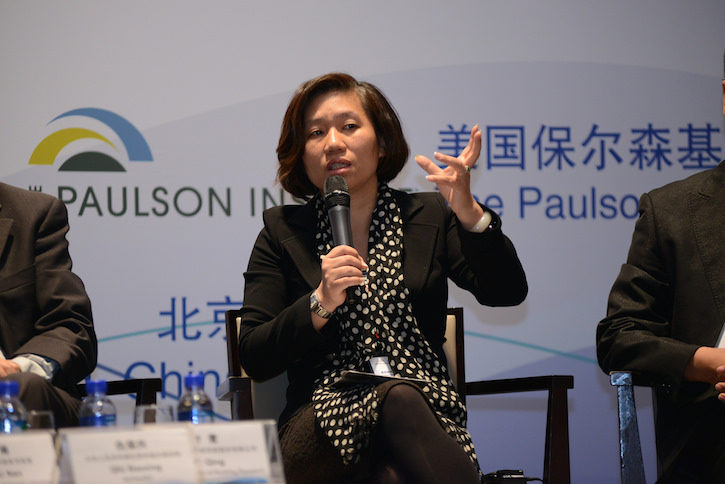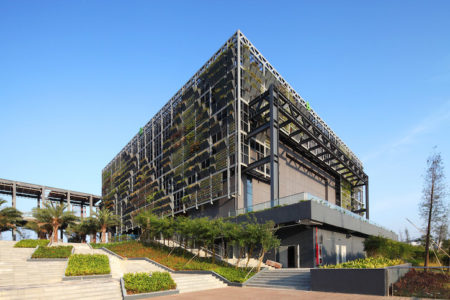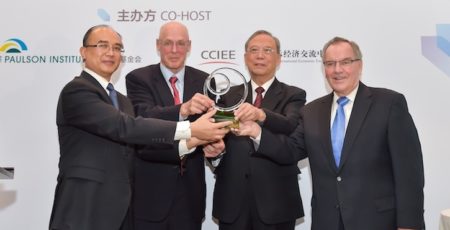
The Shenzhen International Low-Carbon City project doesn’t follow the usual Chinese playbook. Instead of tearing down existing buildings and factories and replacing them with glassy skyscrapers—which often sit empty—the Shenzhen project has taken a more people-centric approach. The planners first built a super-green public exhibition hall and a surrounding park for community use and cleaned up the polluted river with man-made wetlands. Then they transformed old factories into clean spaces where high-tech companies could work. Many local leaders and experts were skeptical that such a go-slow approach could bring in sufficient economic returns. But since winning the Paulson Prize for Sustainable Cities in 2014, the district’s economic growth has averaged 11 percent, far above the national average, while cutting carbon emissions by 10 percent. As the 2016 Paulson Prize launches, Ye Qing, director of the Shenzhen Institute of Building Research and the key driver of the winning project, explains her tradition–smashing philosophy.
 You’ve said this project is a return to the original purpose of cities. Can you explain?
You’ve said this project is a return to the original purpose of cities. Can you explain?
This project is an experiment to explore a new approach to urbanization. Shenzhen’s Pingdi district does not have any advantages—no universities, no industrial clusters, no educated workforce, only low-tech industry. If this place can be transitioned to low-carbon development successfully, it means that hundreds of thousands of cities in China can also replicate and improve the model. In this way it has great significance for China’s development.
Firstly, the biggest breakthrough here is the integrated plan, including urban planning, industrial development, and a transparent low-carbon monitoring system. Secondly, this project returns to the reasons cities arose in the first place. That is, people come first, and then, a place is needed for their activities, leading to construction. We transformed old factories into R&D buildings and healthy, comfortable apartments for high-end researchers. Let people gather first, then the government can introduce coping measures and policies later. Government investment is used for treatment of the environment, energy distribution facilities, water treatment devices, wetlands, and parks.

This is fundamentally different from the previous urban development approach, which went like this: first, massive land acquisition; then demolition and resident resettlement; next, land leveling, land transferring and attraction of investment; and finally, building houses to sell in order to attract people. This is what I call killing the chicken to cook the wings. In our case, we are feeding the chicken so that they bear young chicks and eggs after they grow up. The two approaches are fundamentally different.
Some cities built this way have failed to gather enough buyers/residents in even eight or ten years. It is not economical. You take a long time to build, and after construction, you don’t know where your customers are. In addition, you may have built it too big, or too small, and delays lead to high financing costs. So, instead, we use the approach of “small investment, baby steps quickly, and phase by phase,” to use funds wisely in the shortest possible time. We need to refocus on people and human activity first.
 Are there clear signs that your project is revitalizing the district?
Are there clear signs that your project is revitalizing the district?
Our economic growth averages 11 percent. A subway network is planned, and big companies, both domestic and overseas, are landing one after another. The U.S. Lawrence Berkeley National Laboratory is building a test center here. Royole, a high-tech curved screen manufacturer with an annual output of RMB 20 billion, has chosen this place to manufacture. Shenzhen International Low-Carbon City has become increasingly active, organically combining city development with industrial development, with R&D orientation, and with high-end manufacturing facilities. As a result, the low-carbon city model is increasingly attractive. People come to visit every day. Some follow our ideas, others replicate our low-carbon technologies. A variety of low-carbon technologies are being replicated and used.

We emphasize integration of nature with man, which is a traditional idea in Chinese culture. But how to apply it to modern urbanization? The answer is by using big data and other technologies, computer simulations, modern solar technology, and intelligent water treatment technology, which are the outcomes of last two industrial revolutions. The low-carbon eco-cities development in China is a road combining the traditional Chinese concept of man integrating with nature with the methodology of two industrial revolutions in the West. In that sense, it is a low-carbon development path with Chinese characteristics.
 How did winning the Paulson Prize affect your project?
How did winning the Paulson Prize affect your project?
The prize has been very helpful. First of all, it takes time to prove a lot of practices, and many people questioned the value of such a model. Winning an influential prize when no consensus had been reached has helped the project to be recognized by society. The Prize has made Shenzhen’s government officials and people who participated in the project more positive towards what we are doing.




